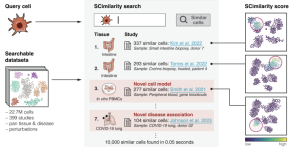Research highlights importance of holistic health-promoting learning environments

Mental ill-health among students in higher education is a growing problem globally. Most efforts implemented to address ill-health involve individual treatment and adjustments to pedagogy. But more can and needs to be done at a structural or environmental level for higher education institutions to ensure learning and well-being among all students. This is shown by a literature review conducted at the University of Gothenburg.
The fact that mental ill-health is increasing, not only in Sweden but all over the world, suggests that the causes could be structural and/or environmental.”
Therése Skoog, senior author of the study
She and her research colleagues have reviewed more than 8,000 studies of interventions in higher education globally to counteract students’ poor well-being. In the literature review, the researchers wanted to get an overview of the types of interventions that have been made and how these have been received by students. Two thirds of the interventions have been aimed at changing pedagogy. Most common among the measures that instead focused on more structural changes is to offer individual health counselling. All this is good, says Therése Skoog, but not enough.
“As things stand, higher education institutions will simply not have the capacity to adapt teaching to all the diagnoses and needs students may have. And unless the trend of increasing mental health problems is reversed, there is a risk that academic performance and degree completion will decrease,” says Therése Skoog.
Instead, she argues that learning environments as a whole must be changed to promote sustainable learning. Everything from the physical environment to course design, requirements, opportunities for recovery, the relationship between students and teachers, and so on, needs to be included when higher education institutions take a holistic approach to learning environments.
“And the opportunities to change for the better are great,” says Therése Skoog.
One promising initiative she points to is the ‘Healthy Universities’ model developed by higher education institutions in the UK. The model is based on a holistic perspective on health that includes both learning environments and organisational culture.
“Another is the Universal Design for Learning guide, which is essentially about designing learning environments to make them more accessible to the whole group of students while keeping course objectives the same.”
For most people, starting academic studies is a big step; often it means moving to a new environment, getting to know new people, learning how to navigate within new contexts.
“The more welcoming the environment is, the less stressful it will be for students,” says Therése Skoog.
Professor Skoog has been responsible for the Sustainable and Accessible Learning Environments project at the University of Gothenburg. The project aimed to investigate how higher education institutions can work structurally to promote not only learning but also students’ mental health. The project has attracted interest from other universities. At the University of Gothenburg a project with a special focus on the physical learning environments is launched as a follow-up.
“It is inspiring that more and more universities are taking this issue seriously. And to see how initiatives are being taken in different parts of the world to reverse the negative trend and improve students’ mental health,” says Therése Skoog.
Source:
Journal reference:
Olsson, T., et al. (2024). Health‐Promoting Learning Environments in Higher Education: A Scoping Review of Structural Interventions to Protect Student Mental Health. European Journal of Education. doi.org/10.1111/ejed.12772.







